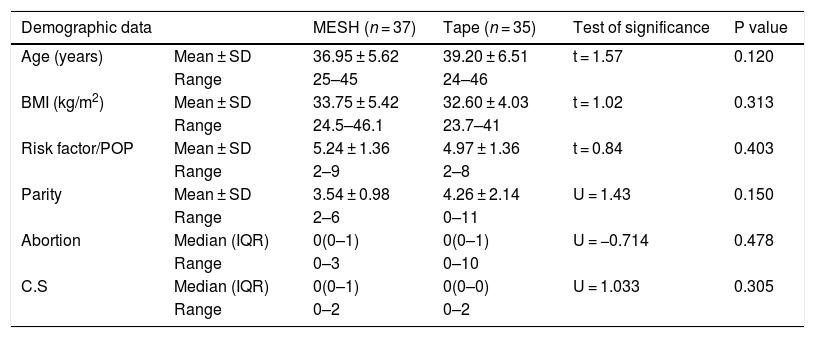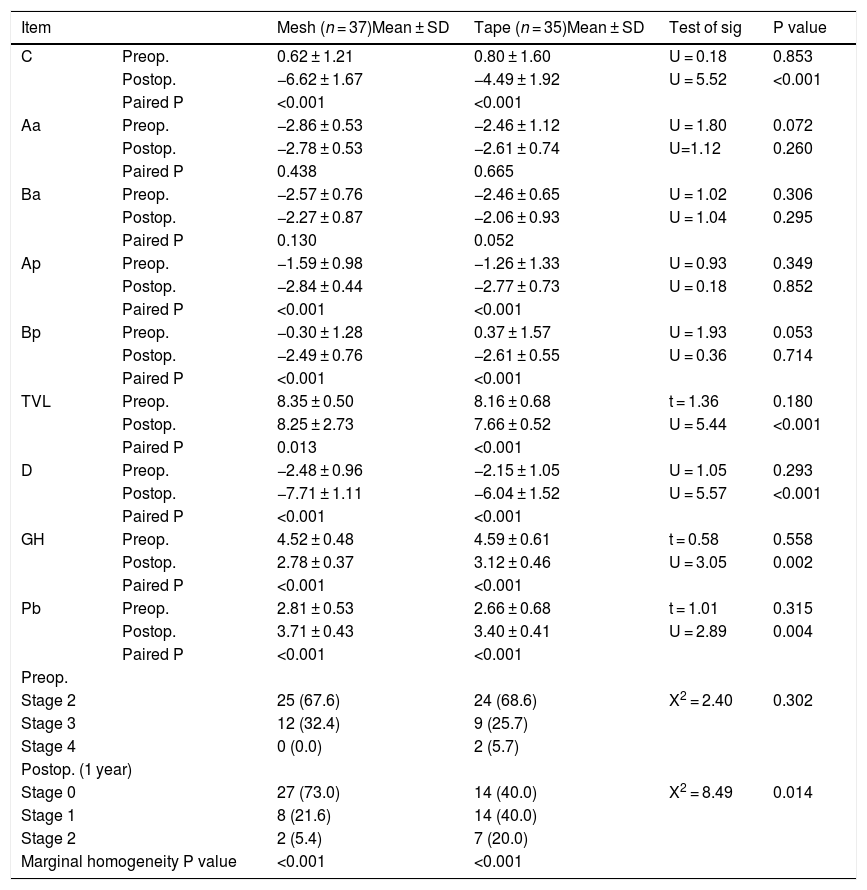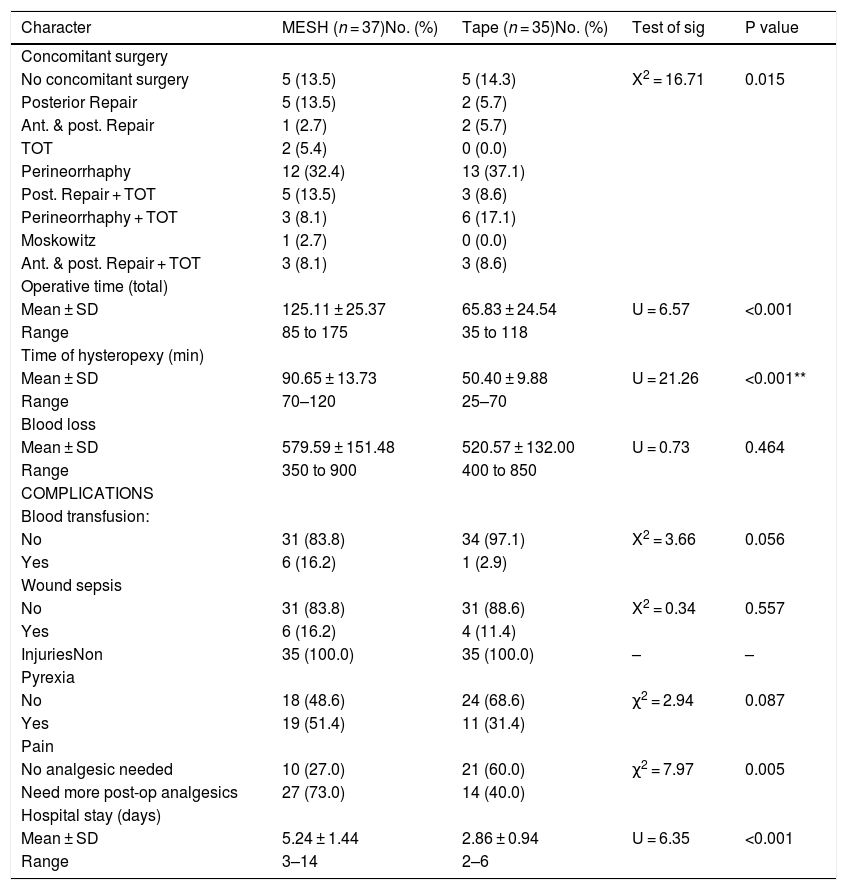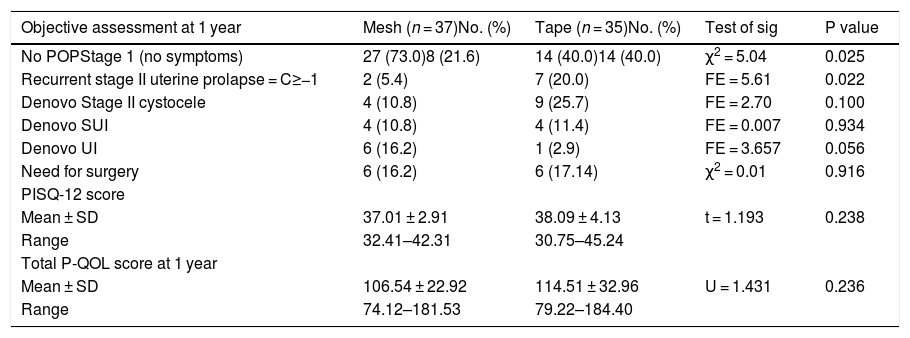uterine preservation is increasingly a common demand in surgical management of pelvic organ prolapse. Using Proline mesh in surgical repair of prolapse may have negative drawbacks.
Objectivecompare between using Polyproline mesh and Mersilene tape in abdominal Sacrohysteropexy repairing apical prolapse stage ӀӀ or more.
Study designThis RCT study was conducted at the Department of Obstetrics and Gynecology (Menoufia and Ain Shams university hospitals, Egypt). Eligible population included women planned Sacrohysteropexy for uterine prolapse ≥ stage 2 assigned to two groups: Mesh group (n = 38), underwent Sacrohysteropexy with polyproline mesh, and Tape group (n = 38), underwent Sacrohysteropexy using Mersilene tape.
ResultsHigh statistically significant difference between TAPE group and MESH group concerning hysteropexy time was 50.4 min in TAPE group vs 90.6 min in MESH group (p < 0.001), need for post operative analgesia was14 in TAPE group vs 27 in MESH group (p < 0.005). The mean hospital stay was 2.8 days in TAPE group vs 5.2days in MESH group (p < 0.001).
ConclusionsUsing Mersilene tape in Sacrohysteropexy is a safe alternative to Polyproline Mesh with comparable efficacy with less complications. Tape is easier as it needs less dissection area for sacral fixation so less injury incidence.
La preservación uterina se requiere cada vez más en el tratamiento quirúrgico del prolapso de órganos pélvicos. El uso de la malla de prolene puede tener efectos adversos en la reparación quirúrgica del prolapso puede tener ciertas desventajas.
Objetivocomparar el uso de malla de polipropileno y cinta de mersilene en la sacrohisteropexia abdominal para el tratamiento de prolapso apical en estadio ӀӀ o superior.
Diseño del estudioEste estudio ECA se realizó en el Departamento de Obstetricia y Ginecología (hospitales universitarios de Menoufia y Ain Shams, Egipto). La población elegible incluyó a mujeres a las que se había planificado una sacrohisteropexia por prolapso uterino ≥ estadio 2, asignadas a dos grupos: Grupo de malla (n = 38), sometidas a sacrohisteropexia con malla de polipropileno, y grupo de cinta (n = 38), tratadas mediante sacrohisteropexia sacra con cinta de mersilene.
ResultadosHubo diferencias estadísticamente significativas entre el grupo tratado con cinta y el grupo tratado con malla en cuanto a la duración de la histeropexia: 50.4 minutos en el grupo de cinta vs. 90.6 minutos en el grupo de malla (p < 0.001), la necesidad de analgésicos en el postoperatorio: 14 en el grupo de cinta vs. 27 en el de malla (p < 0.005). La estancia hospitalaria media fue de 2.8 días en el grupo de cinta vs. 5.2 días en el grupo de malla (p < 0.001).
ConclusionesEl uso de cinta de mersilene en la sacrohisteropexia es una alternativa segura a la malla de poliprolileno, con una eficacia comparable y menos complicaciones. El procedimiento con cinta es más fácil, ya que requiere una zona de disección menor para la fijación sacra, por lo que la incidencia de lesiones es más baja.











